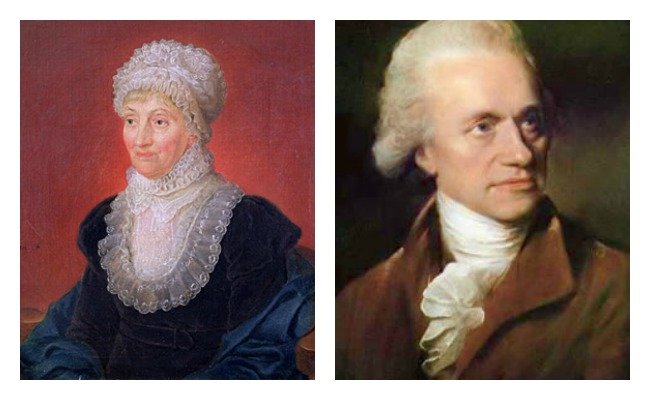Herschel and the Milky Way

During the late 18th century siblings Caroline and Sir William Herschel made fascinating discoveries. Their work mapping the Milky Way Galaxy helped advance astronomy. Read on to learn more about their amazing discoveries.
In the late 18th century astronomers Sir William Herschel and Caroline Herschel (Sir Williams sister) set out to map the three-dimensional distribution of stars in the Milky Way Galaxy.
Mapping the Galaxy
They assumed that they could see to the outer boundaries of the Milky Way in all directions. As a result, they set out to count the number of stars. They hypothesized they could find the relative distances to the edges of the star distribution. Consequently, if they saw too many stars in one direction they reasoned that the edge of the Milky Way in that direction is far away. Therefore, if their telescope revealed fewer stars in another direction they concluded that edge must be closer.
Star Gauging
Calling their method “star gauging,” they counted stars in 683 directions in the sky. They outlined the model of the star system. Their data indicated that the stars were arranged in a disk shape with the sun near the center. In some directions, the Herschels saw very few stars and these “holes in the sky” produced great irregularities along the edge of the diagram.

Their Model
The model proposed by the Herschels was widely accepted and studied by other astronomers. The Herschels were unable to measure the size of the star system, but later researchers attempted to do so. Regrettably, the Herschels assumed they could see to the edge of the star system. In fact, they could only see as far as the interstellar dust would allow. At the time the Herschels did their work, astronomers did not understand that the interstellar medium partially blocks the passage of light. The Herschels counted similar numbers of stars in most directions around the Milky Way.
Counting the Milky Way
As a result of counting the same amount of stars in most directions, they made an error stating that our sun was located near the center of the galaxy. Furthermore, the “holes in the sky” observed by the Herschels were not empty, but dense interstellar clouds completely blocking the view of stars beyond them. No doubt the Herschel’s made an error, but this error led other astronomers to research further.
Other Herschel Observations
Not only were the Herschels’ known for mapping the Milky Way Galaxy they were known for other observations as well.
- 13 March 1781, Herschel discovered Uranus. (William)
- Discovery of Titania and Oberon; Moons of Uranus (William)
- Discovery of Enceladus and Mimas; Moons of Saturn (William)
- During the years 1786–1797, she discovered or observed eight comets, eleven nebulae. (Caroline)
Caroline spent many hours polishing the mirrors of high-performance telescopes so that the amount of light captured was maximized. She also copied astronomical catalogs and other publications for William. After William accepted the office of King’s Astronomer to George III, Caroline became his constant assistant.
Made possible by building over 400 telescopes, the Herschels career in Astronomy helped move the study of astronomy forward. Caroline arranged two-and-a-half thousand nebulae and star clusters into zones of similar polar distances adding to astrological records. Their impressive time spent studying the night time increased our understanding of astrological bodies in the universe.
